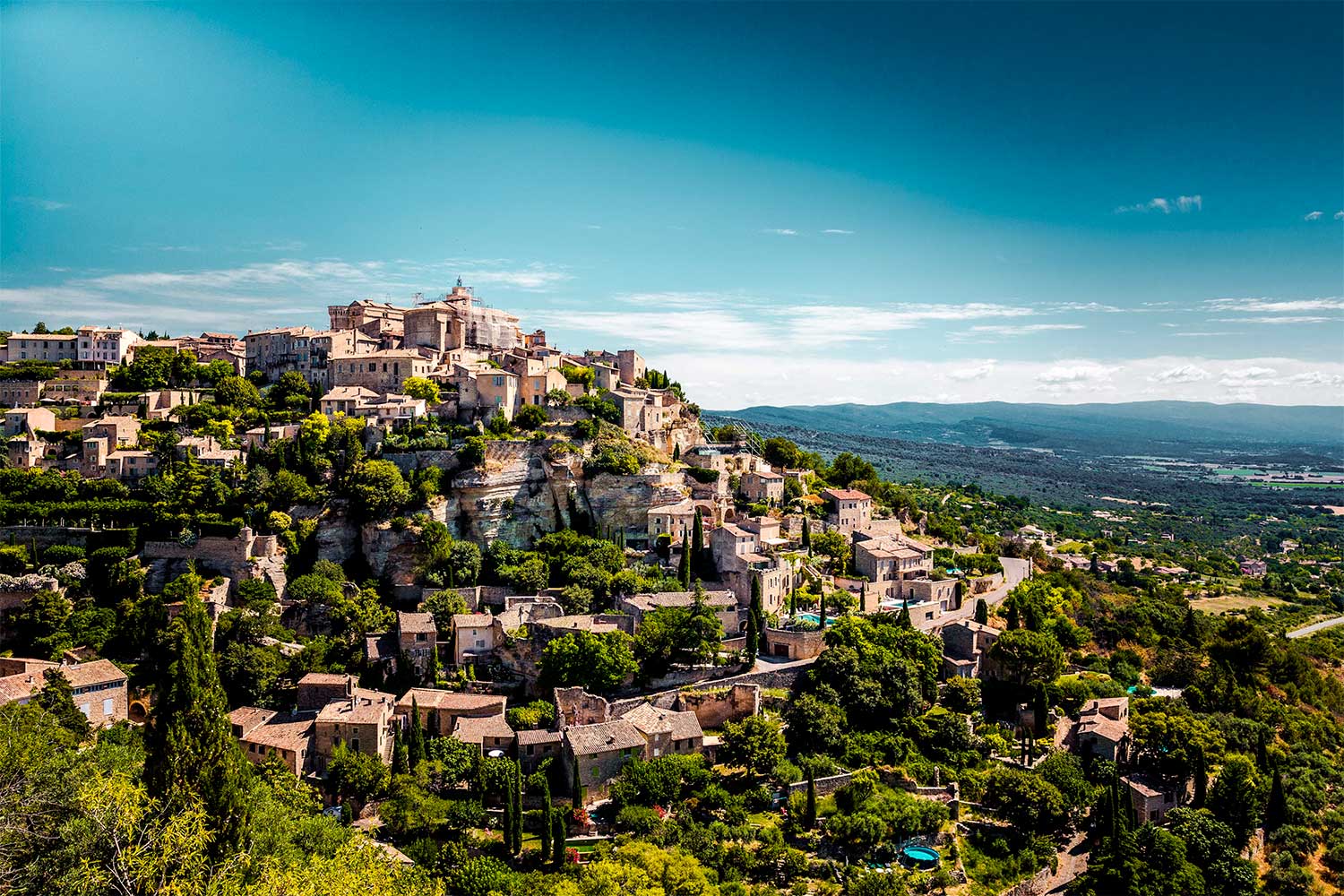Explore six of the most beautiful villages in Provence, with detailed insight on culture, landscapes, and local life in the South of France.
The Appeal of the Most Beautiful Villages in Provence
The South of France is known for its diverse landscapes, Mediterranean climate, and preserved rural heritage. Among its attractions, the villages in Provence are key destinations for travellers looking for history, scenery, and traditional life. This article examines six notable villages through verified data and regional context, highlighting their characteristics, locations, and what visitors can realistically expect from each.
Gordes: Stone Architecture and Hilltop Views
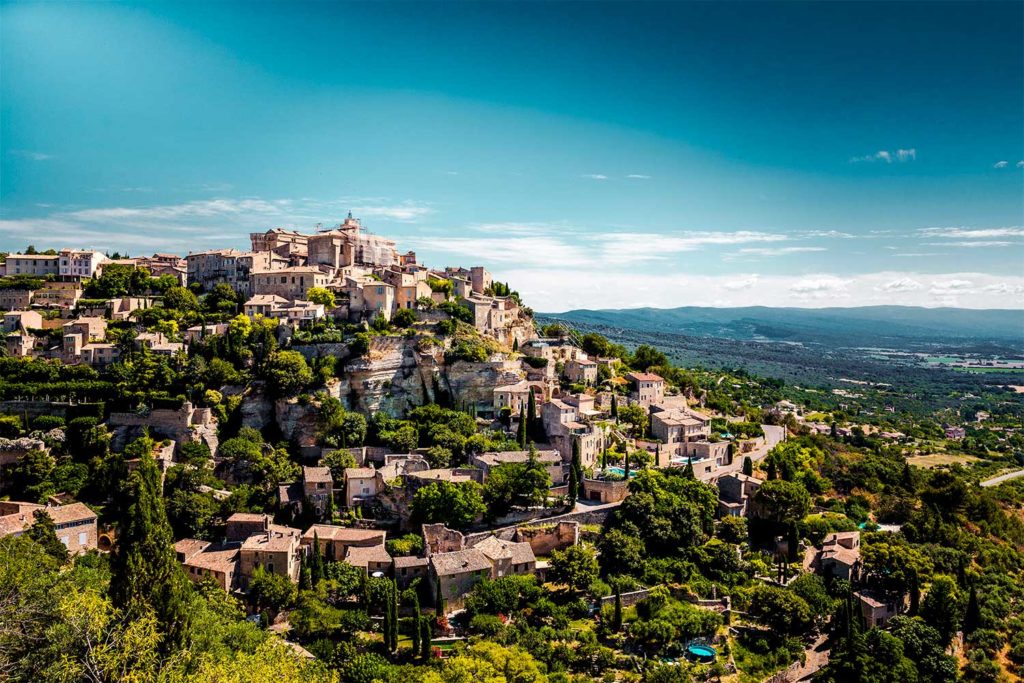
Gordes is located in the Vaucluse department, within the Luberon Regional Natural Park. This village perchée is built on a rocky hill, offering clear views over the Calavon valley.
The built environment of Gordes is mainly composed of limestone houses and cobbled alleys known as calades. This architectural style reflects centuries of adaptation to terrain and climate. The village’s position at 340 metres (1,115 feet) altitude exposes it to mistral winds, which have shaped both its vegetation and construction methods.
The Abbaye Notre-Dame de Sénanque, located 3 km (1.9 miles) from the centre, is a 12th-century Cistercian abbey surrounded by lavender fields, blooming mainly in late June and early July. Entrance to the abbey is €9 (approx. £7.70 / \$9.70) per adult.
Gordes maintains a balance between cultural tourism and residential function. Its weekly market on Tuesdays is a source of local produce, including goat cheese, olives, and lavender honey. Art galleries and seasonal exhibitions, while modest in number, are carefully curated to reflect regional craftsmanship.
Roussillon: Ochre Colours and Geological Identity
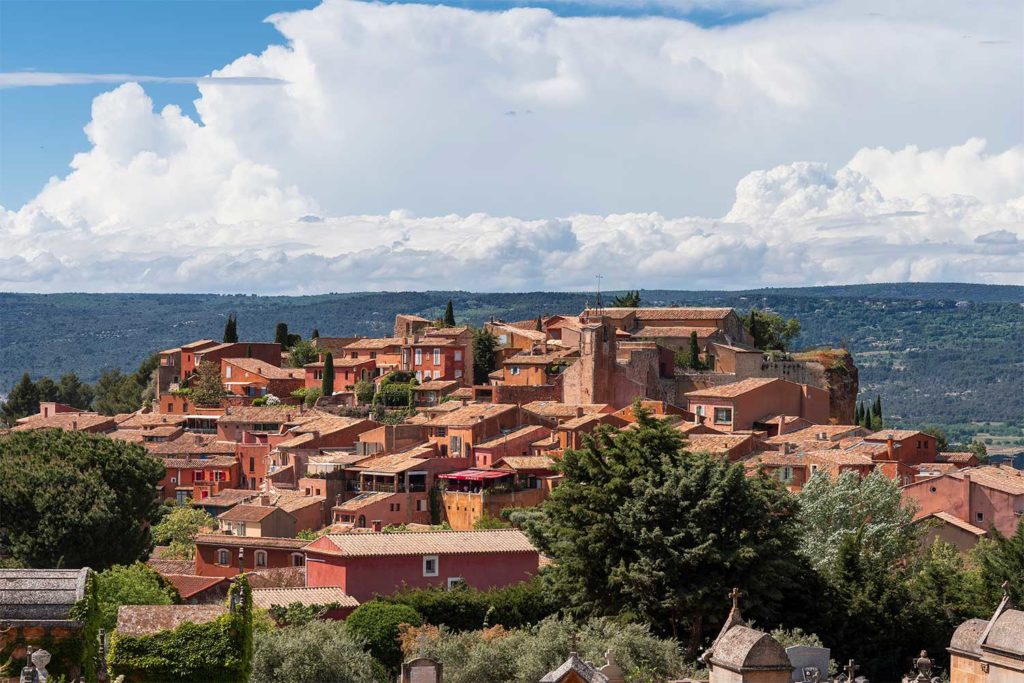
Located 10 km (6.2 miles) east of Gordes, Roussillon sits on one of the richest ochre deposits in Europe. The village is characterised by buildings in shades of red, orange, and yellow, due to the iron oxide content of the local earth.
The Sentier des Ocres (Ochre Trail) is a 1 to 1.5 km (0.6 to 0.9 mile) walking route through former quarries. Entry costs €3.50 (approx. £3 / \$3.75). This walk is one of the few opportunities in France where visitors can see ochre in its natural and industrial contexts.
Roussillon is not designed for large tourist flows. Streets are narrow and many are pedestrian-only. Summer months bring dense foot traffic, particularly during market days on Thursday mornings. Most artisan shops in the centre sell pigments, ceramic tiles, or small furniture using local materials.
Accommodations are limited to boutique hotels and gîtes with rates starting at €90 per night (approx. £77 / \$97) in high season. Parking is regulated due to high visitor numbers and the village’s topography.
Les Baux-de-Provence: Historical Ruins and Quarry Art
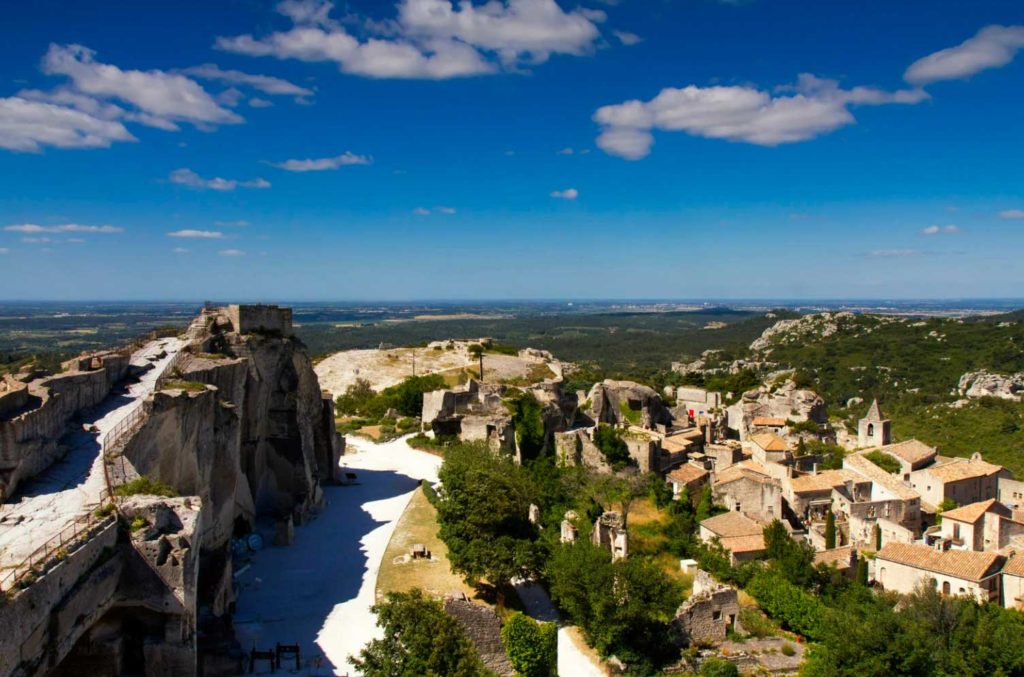
Les Baux-de-Provence, in the Alpilles mountains, stands on a limestone plateau. The village has a population of fewer than 400 but receives over 1.5 million visitors annually.
The Château des Baux, a ruined fortress from the 10th century, dominates the site. Admission costs €9.50 (approx. £8.10 / \$10.30), and visitors can access remains of towers, catapults, and dungeons.
The Carrières des Lumières, a sound-and-light show projected on the walls of a former bauxite quarry, is located 500 metres (0.3 miles) from the village. Each year, the program changes to feature a different artist or movement, such as Van Gogh, Cézanne, or the Impressionists.
The town’s location offers panoramic views over the Vallée des Baux, an area known for olive oil production (AOP Vallée des Baux). Tastings are often free, but purchases typically start at €12 for 500 ml (approx. £10.25 / \$13).
Moustiers-Sainte-Marie: Between Ceramics and Cliffs
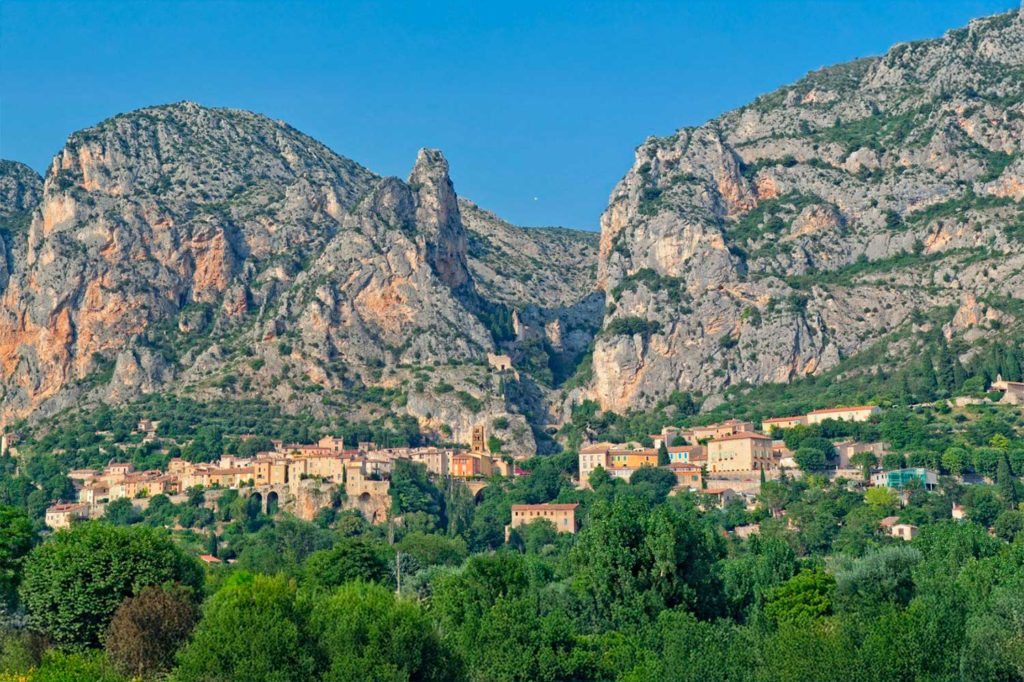
Situated at the entrance to the Gorges du Verdon, Moustiers-Sainte-Marie is classified among the “Plus Beaux Villages de France”. It lies between two cliffs with a stream running through the centre.
This village is particularly known for faïence, a type of tin-glazed earthenware. Some workshops date back to the 17th century and are open for demonstrations. Prices for small decorative plates start around €30 (approx. £25.60 / \$32.50).
Above the village stands the Chapelle Notre-Dame de Beauvoir, reachable by a 262-step path. This viewpoint offers a wide panorama of the surrounding limestone ridges and Lake Sainte-Croix.
Nearby, the Gorges du Verdon is a canyon approximately 25 km (15.5 miles) long and 700 metres (2,296 feet) deep. It attracts visitors for kayaking, hiking, and swimming, with most activities centred around the village of La Palud-sur-Verdon.
Lourmarin: Provençal Living and Cultural Offerings
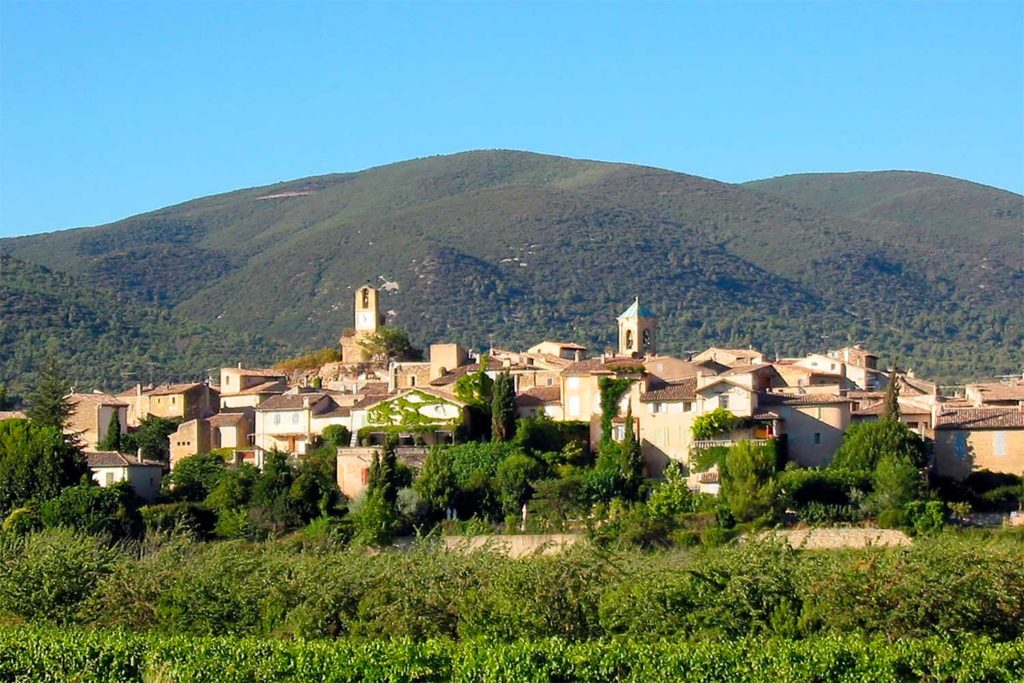
Lourmarin lies at the southern edge of the Luberon, at lower altitude and with more accessible roads. The Renaissance Château de Lourmarin, dating from the 15th century, is a key monument. It hosts classical music concerts in summer and costs €6 (approx. £5.15 / \$6.50) to visit.
The village also supports a population of artists, winemakers, and part-time residents. Local caves offer tastings of Luberon AOC wines, including rosé and white varieties.
Unlike other hilltop villages, Lourmarin is more integrated into the regional road network. Its Friday market is one of the largest in the area and includes textiles, household items, and food.
Accommodation is more diverse here, ranging from guesthouses to small hotels, with rates between €80 and €140 (approx. £68 / \$86 to £120 / \$150) per night in high season.
Fontaine-de-Vaucluse: Water Source and Historic Legacy
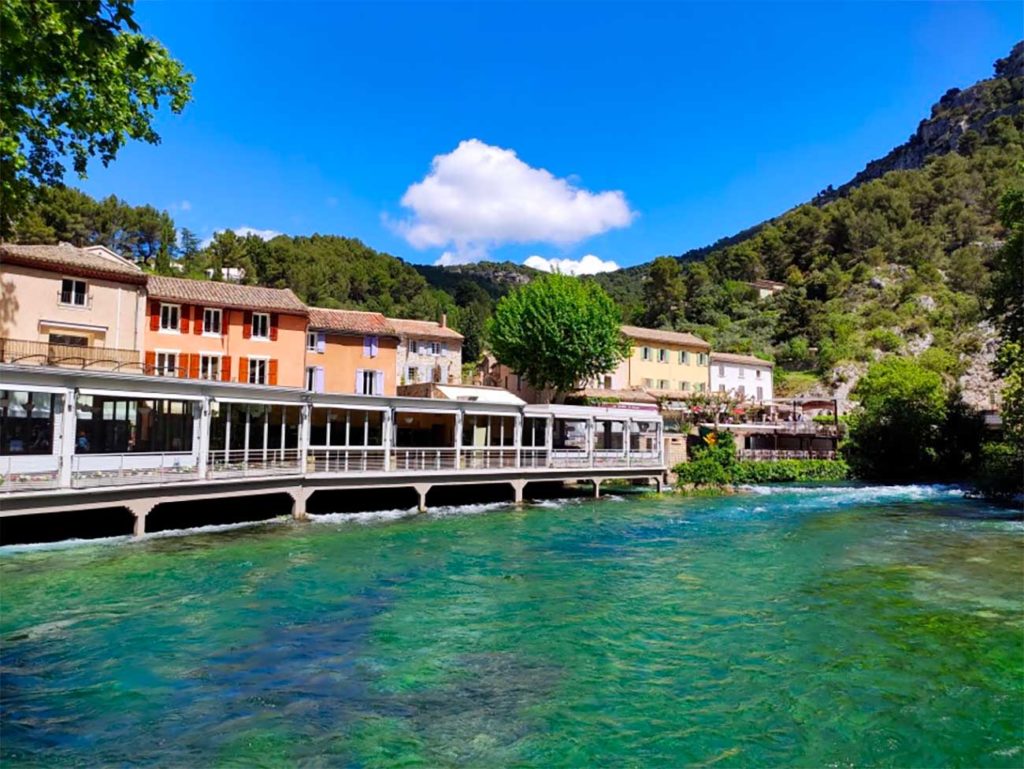
Located at the foot of a steep valley, Fontaine-de-Vaucluse is built around the source of the Sorgue river, one of the most powerful natural springs in France. With an average annual discharge of 630 million cubic metres, it is the largest spring in metropolitan France.
The spring is accessible by a 600-metre (0.37 mile) footpath and is bordered by shops, small museums, and cafes. Depending on the season, the water appears emerald green or turquoise, influenced by underground flows and algae content.
Fontaine-de-Vaucluse also has historical significance: the 14th-century poet Petrarch lived here, and the museum dedicated to his work remains open to the public for €4 (approx. £3.40 / \$4.25).
Despite its popularity, the village remains small. Most visits are half-day trips from L’Isle-sur-la-Sorgue, which is better equipped with accommodation and transport links.
XperienceFrance is your travel specialist in France.
